I am intrigued when cooking turns into a science project. Perhaps it’s the inner scientist in me (was a biology major in college and worked in various labs shortly thereafter for a few years).
Cheesemaking 101: When you add an acid (e.g., rennet [which produces a stronger curd compared to citric acid, lactic acid, lemon juice, vinegar]) to milk, the acid causes the main protein in milk, casein, to separate into solid curds and liquid whey. The curds are then salted, shaped, and left to ripen. The whey is drained; don’t discard the whey, it’s edible too. I froze the whey while I figure out what to do with it. Suggestions?
For more sophisticated cheese than the one we made today, microorganisms (i.e., beneficial bacteria) can be then added to alter the flavor and texture of the cheese. Then, the cheese is left to ripen, or age, in a temperature and humidity-controlled environment for varying lengths of time depending on the cheese type.
Today’s cheese is about as basic as it gets when it comes to making a goat’s milk cheese at home. This is something everyone can do. It’s easy. Just requires a few steps:
To make this cheese you’ll need: 1/2 gallon of goat’s milk (raw or pasteurized), citric acid, and salt. You can add fresh herbs to your cheese if you like; I added chives and chive blossoms.
Got everything you need? Good, now lets’ make some cheese/fromage…
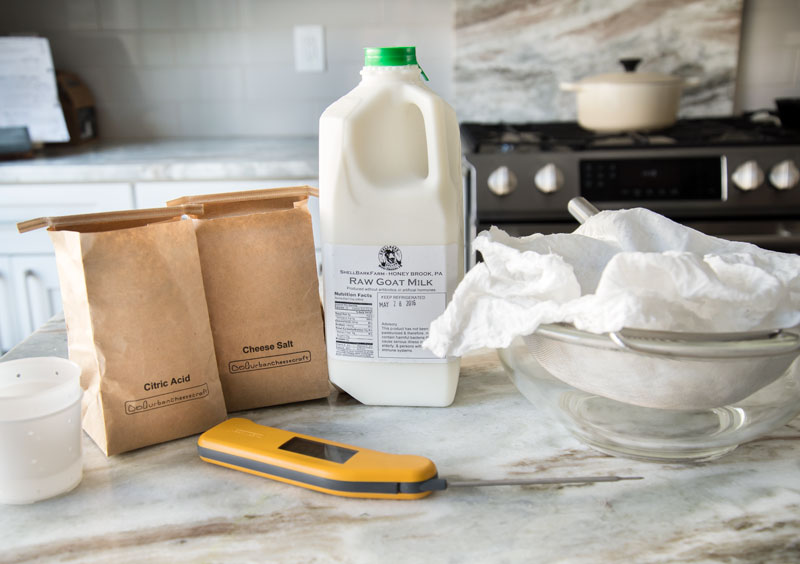
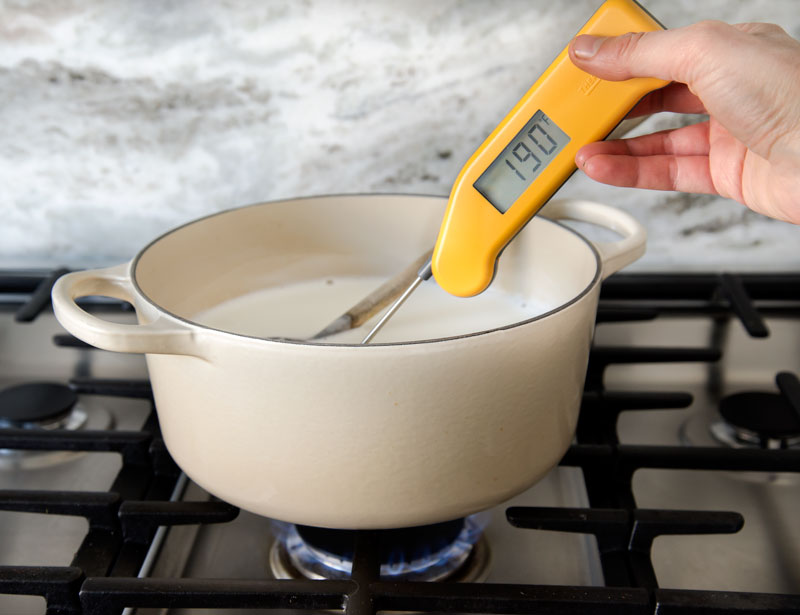
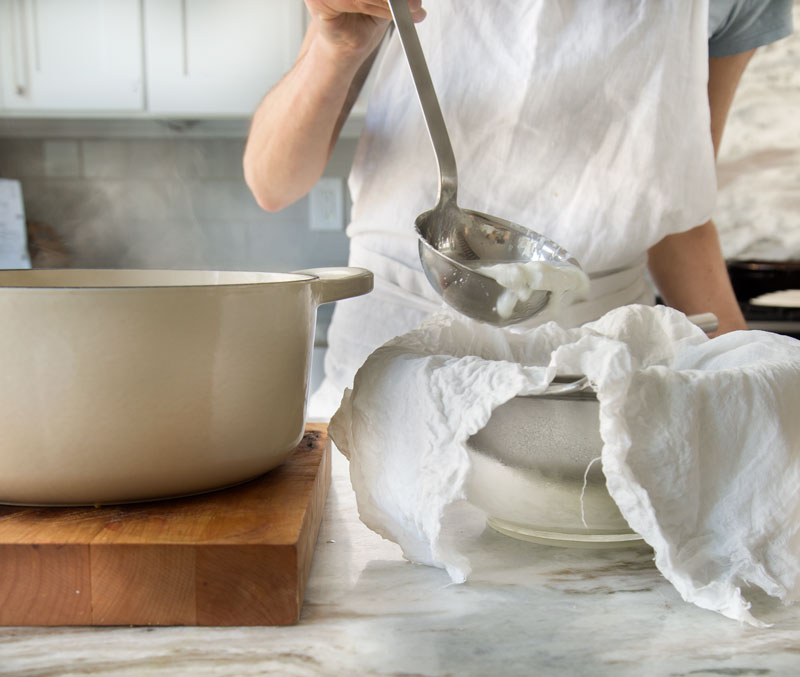
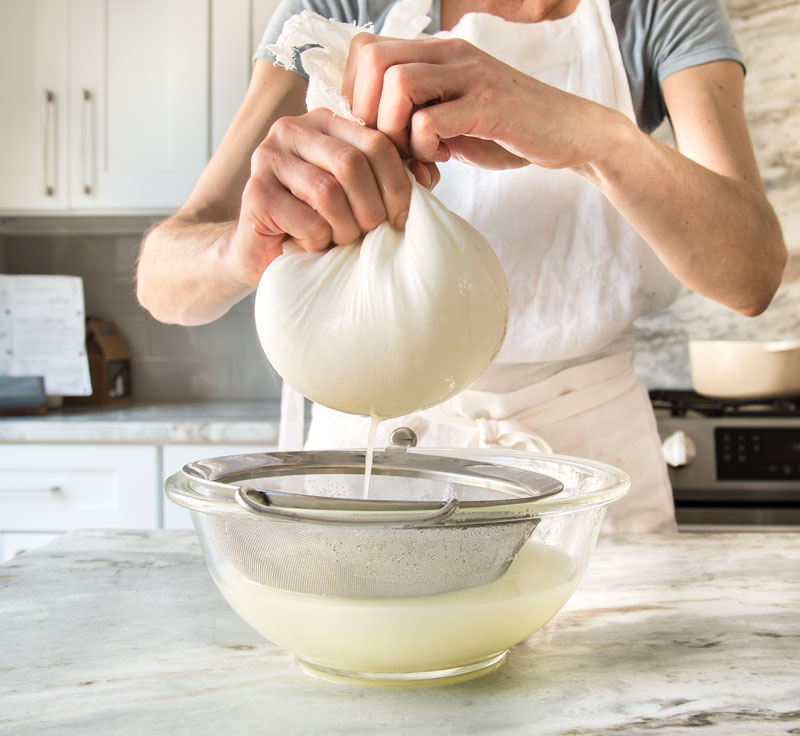
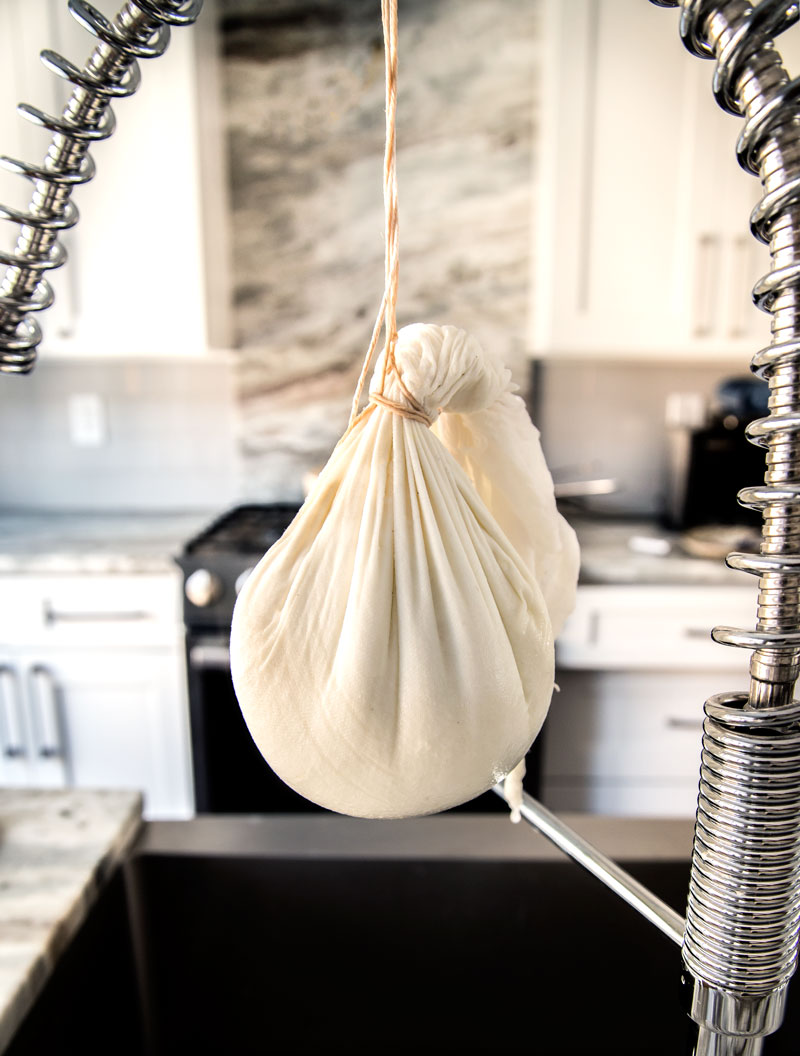
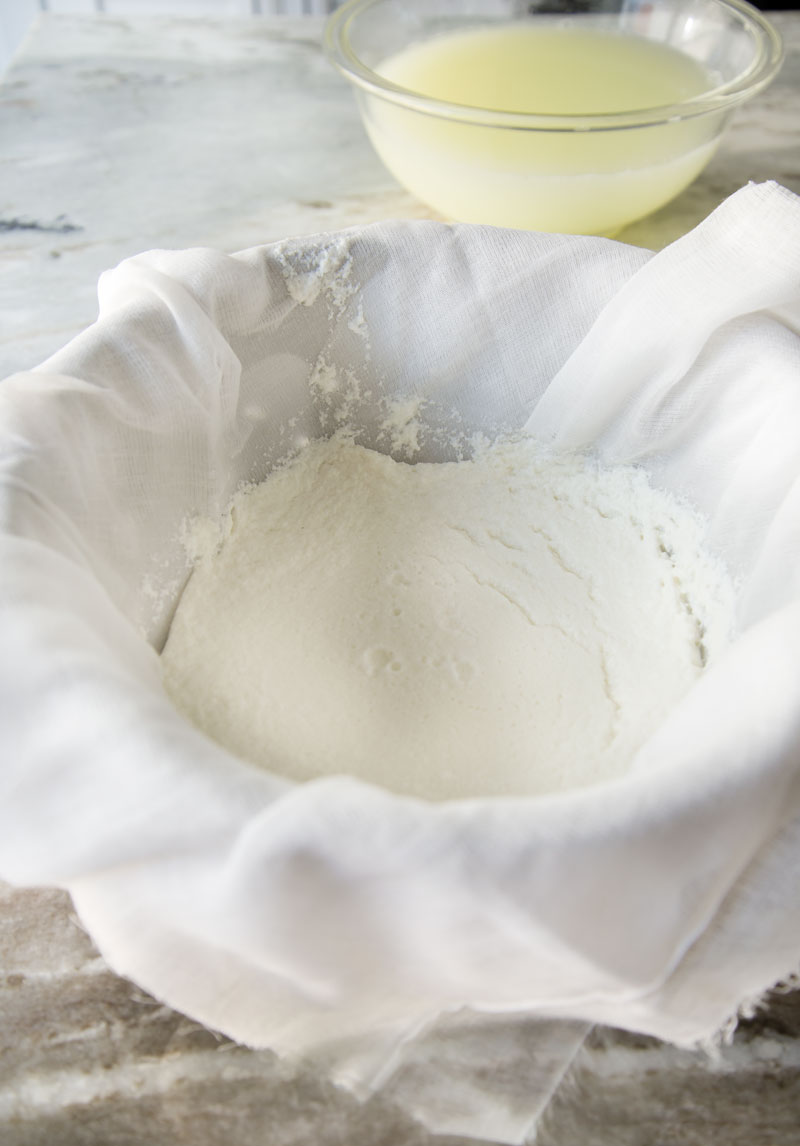
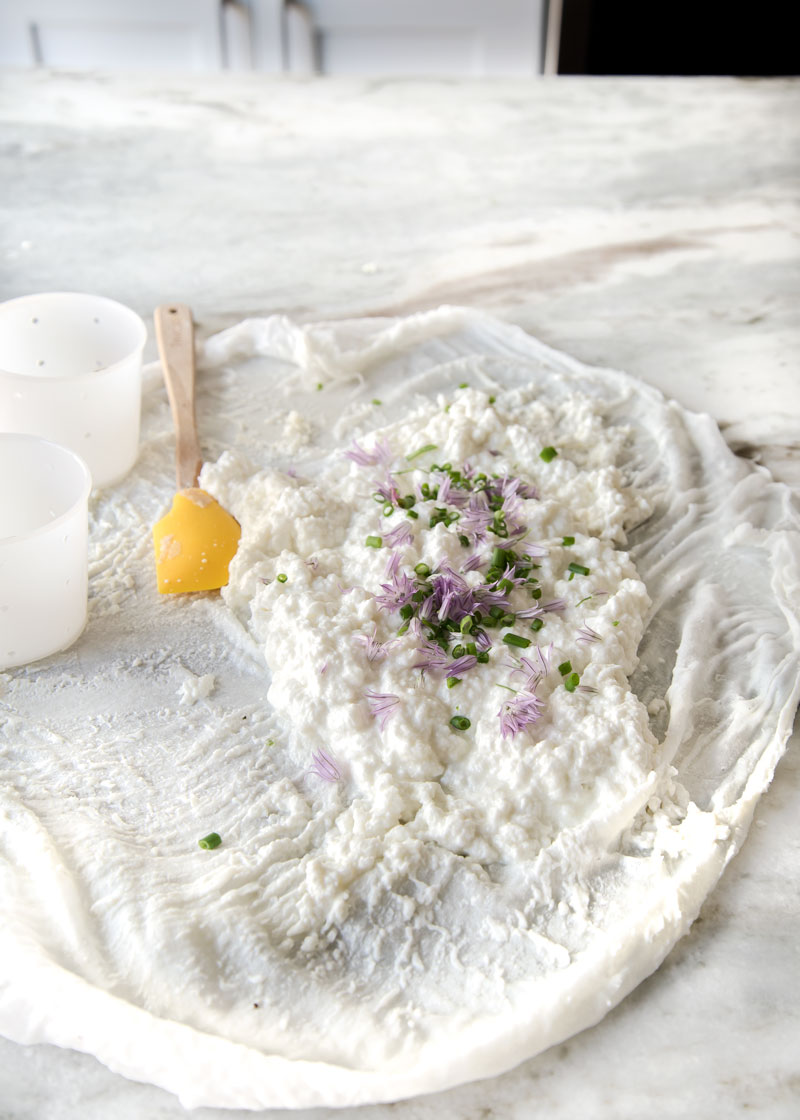
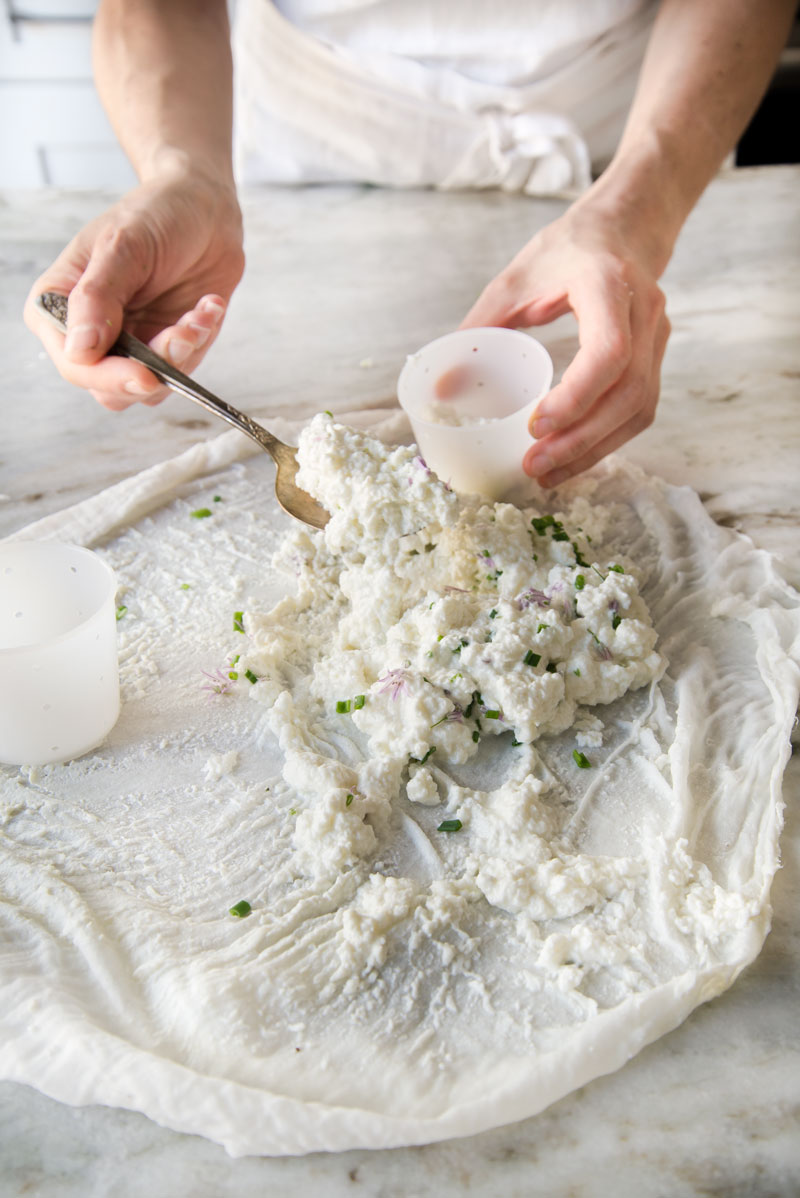
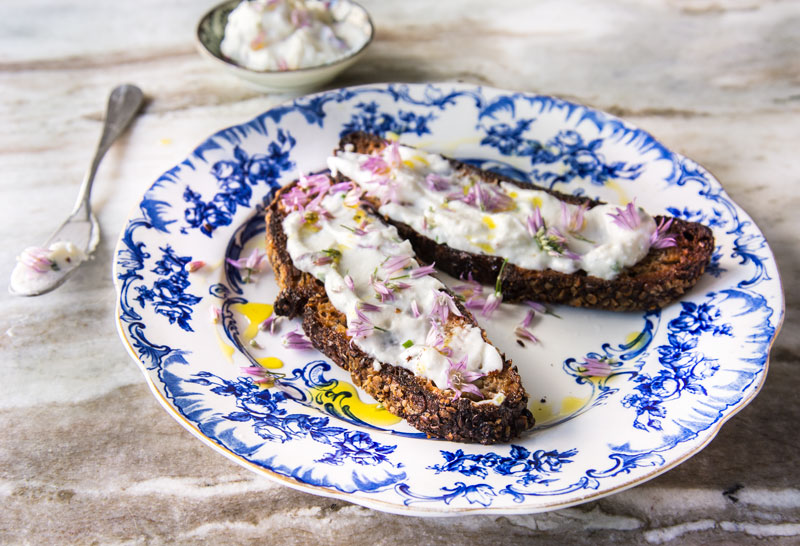
Easy Homemade Goat’s Cheese (Chevre)
1. Dissolve 1 teaspoon of citric acid in 1/4 cup of water.
2. Heat 1/2 gallon of milk to 190F, giving it a stir from time to time. When the temperature reaches 190F, reduce the heat to low and stir the citric acid solution into the milk. Hold the milk at 190F for 1 minute (don’t stir at this point). Remove the pot from the heat, cover, and let sit undisturbed for 10 minutes.
3. Place cheesecloth over a strainer or colander (situate the strainer or colander over a large bowl to catch the whey). Ladle the curds and whey into the cheesecloth.
4. Strain any excess whey (5 to 10 minutes).
5. Add salt, about 1 teaspoon (and add herbs, if you like).
6. Optional: You can shape your cheese (using cheese molds) if you like or leave as a spread.If shaping, place the molds on a plate to catch any excess whey. Spoon the drained cheese into the molds. Press gently to get rid of any air pockets. Allow the cheese to drain, cool, and set for at least 10 minutes in the fridge.
Unmold. Hold the mold upside down and gently tap the cheese out. If it sticks a little, you can run a butter knife around the edges.
Actually, I prefer to skip the molding and leave it as a spread. I find a quick whisk by hand makes the cheese extra creamy.
Voilà, fresh, homemade goat’s cheese.
7. Lastly, toast up some bread, slather on some cheese. Perhaps a drizzle of good quality extra virgin olive oil. Enjoy!
Store your cheese covered in the refrigerator up to 5 days.
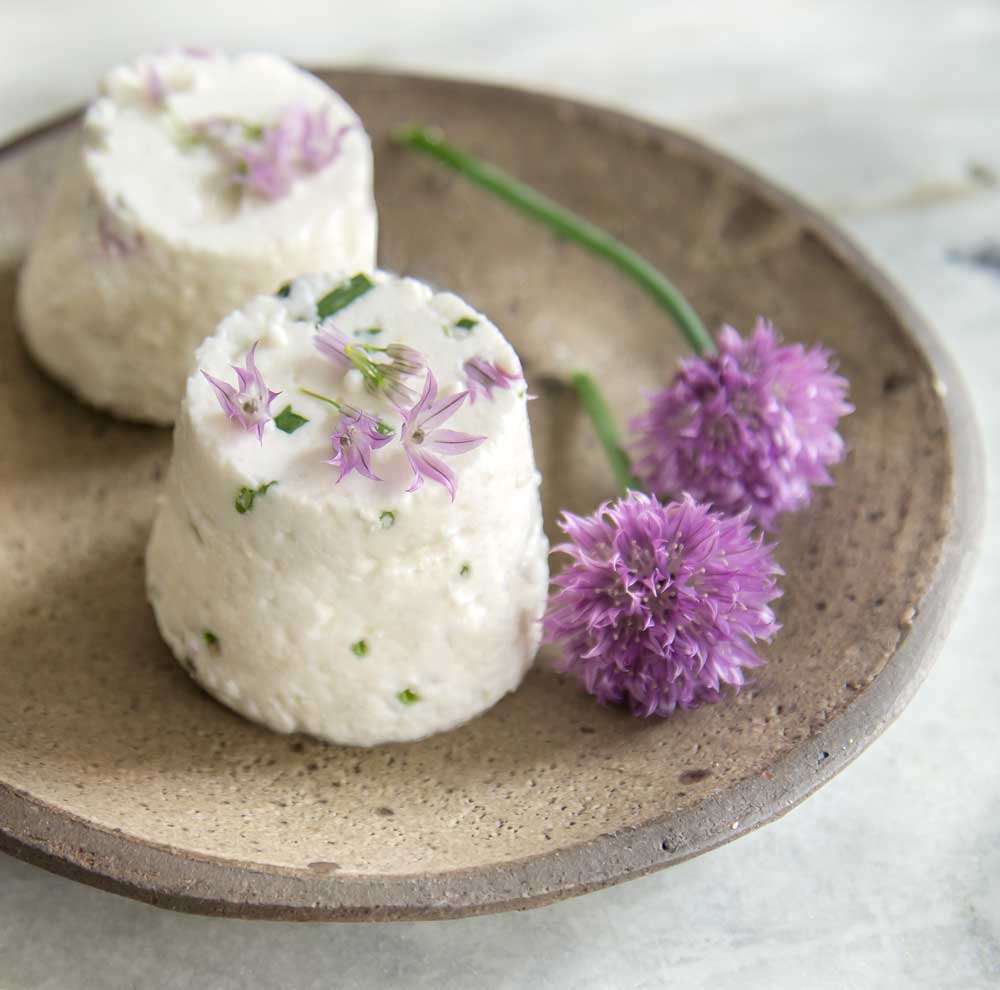



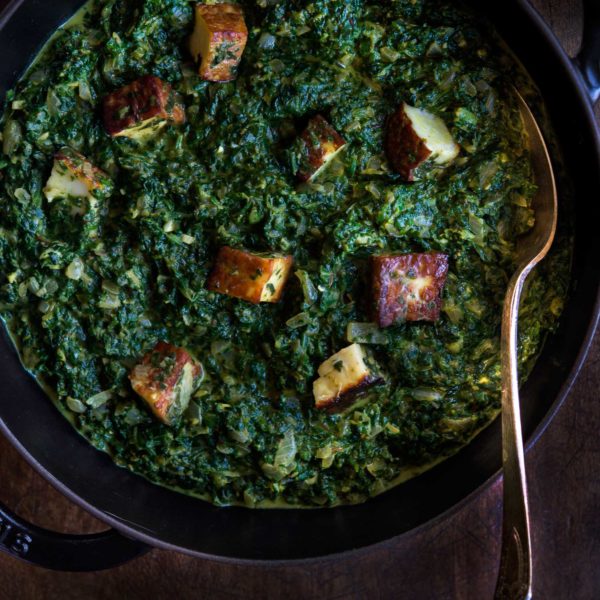



5 comments
Chef Chow
Oh so beautiful!! Great job Linda!!! I can only hope one day I'll be able to take photos like you do!
Wild Greens and Sardines
Hi Chef Chow, I checked out your food blog. Your photography and recipes look really tasty. Keep up the great work! I'm self-taught. I'm still learning too.
Sabrina Russo
Wow, I would've never thought to make homemade goat cheese, but yours looks wonderful! Thanks for sharing 🙂
Talia Gluck
Can't wait to try this. I love your recipes!
P.s.- I made some great pickled radishes with my extra whey.
Wild Greens and Sardines
Thanks Talia! Great suggestion on the pickled radishes with whey. I'm going to give it a try.